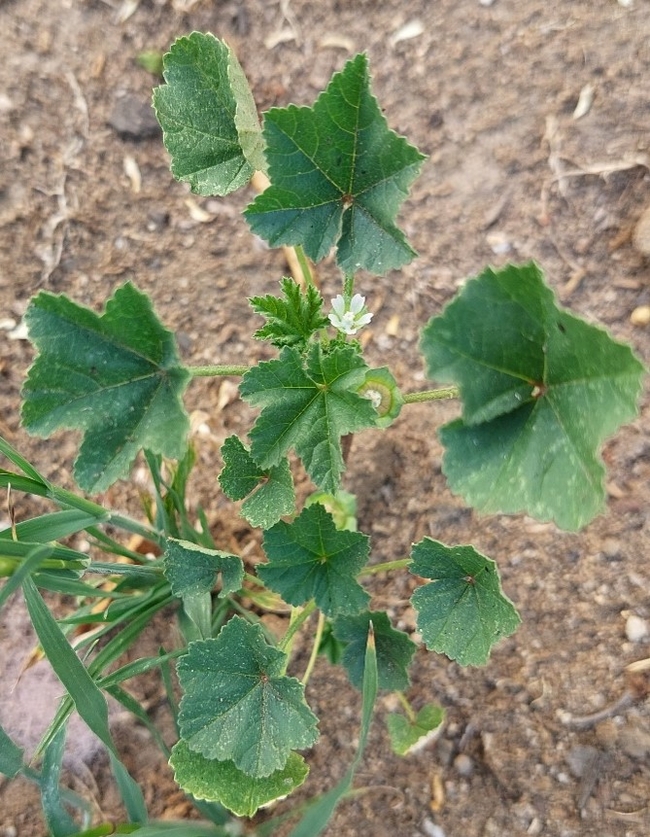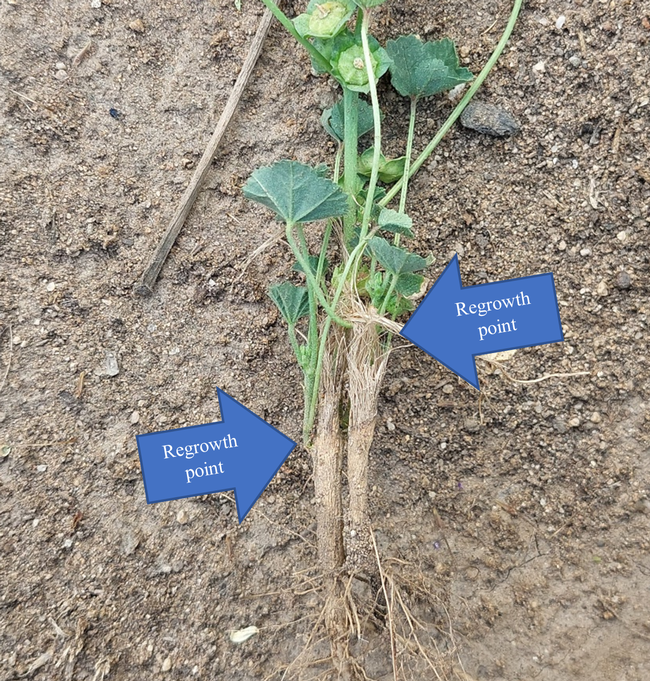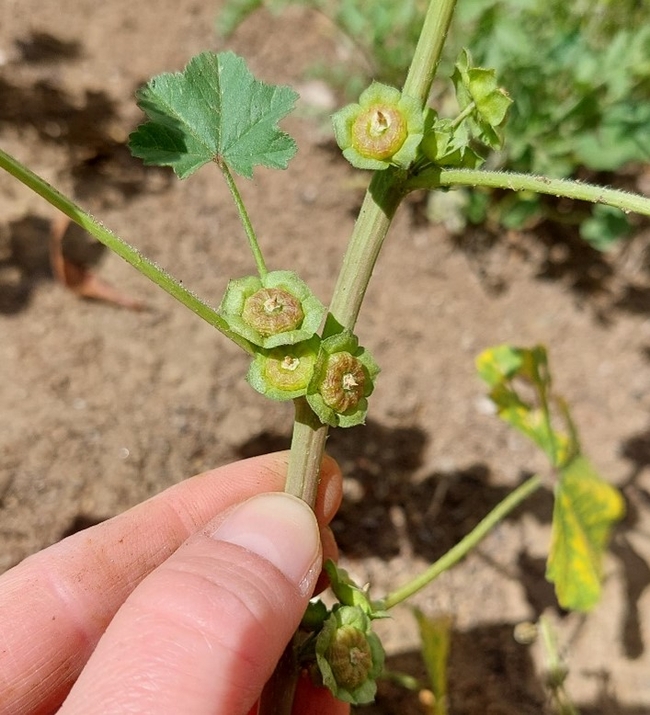In January I visited a small property to help identify various plants that had taken over an acre of unirrigated land. The property owner wanted to know how to manage the weeds, and if horses could safely graze them. Among some residual annual grasses, there was a surprising amount of mallow, already forming enormous mounds of leaves and stems.
Since January, mallow - little mallow (Malva parviflora; pictured above), and/or common mallow (M. neglecta) - continues to show up, not only in small pastures and rangelands, but also along roads and in urban areas in Fresno County. In my 5 years in the region, I have never noticed mallow dominating quite as much as I've seen it this year. It seems that our warm, dry winter worked out just fine for these plants.
Our decent December rainfall made it possible for mallow's sturdy taproots to access enough water to grow rapidly during the rest of the warm winter. Where it grew, mallow is relatively untouched, dominating areas on rangelands and rural roadsides where there is little competition nor grazing pressure.
Mallow is not a favored forage plant for cattle or horses, though it is generally harmless to grazing animals. The only report I found of fatal mallow poisoning1 involved a group of horses with nearly no other feed available. The horses consumed large quantities of little mallow plants and their seeds, containing cyclopropene fatty acids, which were the suspected cause of toxicity.
In Fresno lawns and sidewalks, with more regular mowing or other traffic, the mallow is still relatively small stature. In some places mallow forms a thick carpet to the exclusion of other plants and in others, the mallow has clearly regrown after being mowed or cut (cut points with regrowth pictured above on a small plant I uprooted).
Mallow is a persistent annual plant, reproducing by seeds and able to recover vegetatively from a robust root system. It does not respond to glyphosate treatments, many livestock ignore it in favor of other forages, and larger plants are highly capable of resprouting from mowed stems. Fortunately, small infestations can be removed by hand pulling or hoeing to cut the stem below the soil surface, goats can graze mallow2, and some herbicides seem to control the plant in rangeland and pasture settings.
Of course, many mallow plants in my neighborhood are already producing seeds (as indicated by the fruits developing, pictured above). It may be too late to reduce the population for this year – and next – other than by physical removal.
To find the best way to address mallow in your area, the UC IPM program has a useful Pest Note page here. The excellent book, Weed Control in Natural Areas in the Western United States (which you can purchase through a variety of options listed here), also has a brief weed report on the relative success of many kinds of control options. You can view the Malva weed report here.
References:
- Bauquier, J., Stent, A., Gibney, J., Jerrett, I., White, J., Tennent?Brown, B., ... & Pitt, J. 2017. Evidence for marsh mallow (Malva parviflora) toxicosis causing myocardial disease and myopathy in four horses. Equine veterinary journal 49(3):307-313. DOI: http://dx.doi.org/10.1111/evj.12604
- Abbas, A. M., Al-Kahtani, M., Abdelazeem Mousa, M., Badry, M. O., Hassaneen, A. S., Ezzat-Ahmed, A., ... & Castillo, J. M. 2020. Endozoochory by goats of two invasive weeds with contrasted propagule traits. Sustainability 12(13):5450. DOI: http://dx.doi.org/10.3390/su12135450


